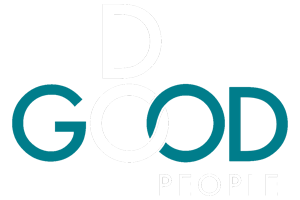Resilience thinking is the means by which we can understand how interacting systems of people and nature can best be managed; and the 7 principles it lays out for it could be the key to corporate sustainability success.
The term resilience is a characteristic or trait often attributed to nature, and one that human beings are slowly learning to apply for overall development purposes and, most importantly, for an effective adaptation to the inevitable consequences of climate change.
In fact, humans are great with adaptation, and we have come a long way socially, economically and technologically to make life ever so fulfilling and interesting. However, the strain we have put on our planet is worth revisiting some of those adaptation systems in order to find as much resilience as sustainability.
This why today we will be exploring how ‘resilience thinking’ and its seven key principles can be applied to corporate sustainability in order to build a socially, economically and environmentally successful business strategy.

What is resilience thinking and why is it important?
Resilience thinking is the result of the impact humans have on the planet. With such a big population, virtually every ecosystem is subject to the impact of human activity, and even just our presence, for better and for worse.
In these inevitable interactions between ecological and social systems lies the importance of resilience thinking, as it dives into how interactions between people and nature can best be managed in the face of climate change and its uncertainty.
Overall, resilience is about the ability or capacity of a system, natural, human, economic, or otherwise, to deal with change and continue to develop. And so business is no stranger to the need for this capacity, specially when it comes to sustainability.
Applying resilience thinking to corporate sustainability
There are seven key principles that help guide resilience thinking to success, and so we wanted to explore how the latter can also be applied to corporate sustainability strategies in order to find balance and success in the economic, social and environmental interactions of business activity.

The 7 principles of resilience thinking
MAINTAIN DIVERSITY
In nature, systems with a diversity of components, for example species, are generally more resilient. A simple reasoning to understand this is that when something fails, there are many other components that can fill in the gap.
It’s easy to see how the same train of thought can apply to business; diversity in the workplace means you have a wider range of knowledge and experience, and so when a problem arises, there are more components to fill in the gaps. In other words, there is more room for innovation and development.
MANAGE CONNECTIVITY
Connectivity in nature is a double edged sword; this is, while it can help recover systems from disturbances, too much connectivity can actually spread disturbances more quickly. However, keeping open corridors to enhance connectivity is in fact crucial for resilience.
Looking into corporate sustainability, extreme connectivity to ESG related issues, for example, is rather unlikely; there are too many areas and elements to cover that a business alone will most likely fail to consider or act upon effectively. This is why collaboration can become key to managing such much needed connectivity, from public-private collaborations, to across industry partnerships, working together is key.
MANAGE SLOW VARIABLES AND FEEDBACKS
Nature is an intricate and complex system that is also highly interconnected. In this regard, slow and small changes in one specific area or element of the bigger system will affect others in the long run. So managing such slow changes, even if its effects (positive or negative) will likely take time, is crucial.
In business and sustainability terms this translates into long term thinking. Even the smallest of variables can have an impact in the medium or long term, that being negative consequences or positive outcomes. And although it is important to prioritize certain elements, by no means should we forget smaller or longer term aspects of sustainability.

FOSTER COMPLEX ADAPTIVE SYSTEMS THINKING
A complex adaptive systems (CAS) approach accepts that in socio-ecological interactions, many connections can occur at the same time at various levels. In other words, this approach accepts the uncertainty and unpredictability of such interactions.
One may argue this is similar to running a corporate sustainability strategy; with increasing and ever-changing regulations as well as climatic circumstances, a strict strategy may not be in the best interest of a successful sustainability performance. And although planning is key, leaving room for flexibility whilst acknowledging certain boundaries is the best kind of strategy.

ENCOURAGE LEARNING
A principle widely applicable to any and every aspect of life; it is particularly relevant for socio-ecological interactions, as these systems are constantly changing and developing. And much like for the latter kind of interactions, businesses can find great advantages in applying this principle.
Revisiting knowledge is crucial for sustainable development. Take for example the progress made between the Millenium Development Goals and the Sustainable Development Goals. It is a clear example of revisiting knowledge, as well as of finding collaborative learning processes that can further improve the outcomes of such goals.
BROADEN PARTICIPATION
Raising awareness on the dangers our ecosystems face due to our human activity is necessary to get as many people involved in the process of creating a sustainable and healthy livelihood for all species. From experts to the broader public, everyone should be considered to join the conversation and the protection efforts.
Similarly, companies can not narrow their sustainability strategy to a single department or single team of people, regardless of their expertise, if we want sustainability to succeed it needs to be deeply and widely embedded in the company culture. Involving all stakeholders is crucial to corporate sustainability success. Involving employees, for example, can be a great first step into building a culture of sustainability.
PROMOTE POLYCENTRIC GOVERNANCE
To put simply, polycentric governance refers to international cooperation and collective action, this is, when a variety of governance bodies enforce rules or legislation on a given area, for example climate change. However, time has shown haw complex and challenging this can be, as different actors have different interests.
Businesses are no strangers to this reality, from stakeholders’ interests to shareholders demands, navigating collective governance can be tricky. But, chances are sustainability can be a binding force for all, as it is the path towards our common livelihood, socially and economically speaking. It is important that the structure and network of connections is tight even in the face of differences, so that collaboration can go beyond sharing information.

What can we learn from resilience thinking?
If there is something to learn from socio-ecological interactions and how to apply resilience thinking, is that every single principle mentioned above is highly interdependent of the others. It is in short a complex system of collaboration and constant learning to discover the many nuances of what sustainability truly means.
It is clear that even when applied to corporate sustainability, collaboration across actors, that being industries, companies, individuals, governments or organizations, is the key to finding success.

In DoGood we believe that working collectively can help us find that which alone may seem unattainable or useless. That is why we think the workplace is the perfect environment to find that collective eagerness to make a difference, both for the sustainability and purpose of the company and a more sustainable way of being for all.
Through our technology we are able to activate and track employees’ impact, creating engagement that translates into improved ESG metrics, reputational value and an overall positive impact for the environment and society.







